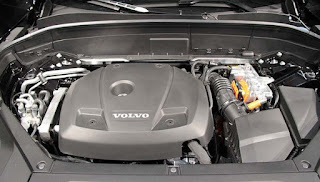August 2016
4 Great BMW engines
A
few weeks ago, I saw the new BMW M4 crackle and whine by, its exhaust an interesting
compromise of BMW high revving and air-ish sound as it drove. I wrote an
editorial last year for my automotive purposes to explore why I did not like
the M4's turbos. Call me close-minded, but I
thought the higher revving M3 of yore was the life of the BMW party.
It hit me though.
It hit me though.
BMW
is a carmaker who resorts to whatever it needs to make raw power, just now in a bit
more responsible, buttoned-up, fuel efficient way.
1.
All normal BMW Inline Sixes—late 1970s to present day (not counting M3
engines! see #4)
Applications: nearly all BMW's cars and sport utlities
Yielded anywhere as little >200 hp to nearly 500 (1970s M1 race car prototype).
I
can relate with hardcore Bimmer fan’s love of the company’s long running
product, the inline six. The most epic example comes from the classic M1,
sporting a strong-for-its-time 300 horsepower in 1978 road car
spec, to nearly 500 for the prototype spec.
All this, plus strong torque,
from 6 normally aspirated cylinders. Still defined as an engineering marvel for
its time, the more basic-equipped sixes have been entertaining BMW owners for
decades. The long time standard issue engine in several cars, the
I-6 is now optional on many models including those cars just mentioned.
BMW’s other longtime selling
point was the availability of the six with a manual, and in the 2 and 3 Series
cars, that is something it continues to offer its customer base to this day.
In recent times, the engines
have revved high, been equipped with as many as 3 turbos, and adopted hybrid
drive systems.
2. 5.4 liter V-12
Applications: 1990s 750i/iL, 1990s 850i Coupe (limited
production)
OK, so the old 5.4-liter V-12
was not high on power, but it was a bold effort from the engineering team to create its first V-12.
This brand new engine signaled the turning point for an ultimate engine that
would very mildly share of the same architecture and cylinder count as the
McLaren F1 road car would—just much smaller, weaker valves) and half the power (320-hp instead of 627). The big Seven was and is a great
sporting luxury cruiser, and paved the way to its faster, more respected 438-hp successor: the 760i V-12.
As for acceleration for the
Seven with the 5.4? Slower than any of the today’s generation cars, but still packing
more a bit more juice than the base V-8 did. My point is that although this was
not a powerful car, it had the beginnings of the engine block for the McLaren
F1, as well as the lush Rolls-Royce Phantom.
3. 5.0 liter high-revving V-10
Applications: 2005-10 M5 sedan and M6
While
applied to what some call an overly technological car, the racing-derived
replaced the venerable V-8 from the 2000 M5. Sporting an awesome 500 hp rating, this V-10 redlined at 8250; possibly the highest
of any luxury sedan for its time. Although electronically limited to 155 mph, a YouTube search for the cars shows what appear to be
200-mph attempts with the limiter deactivated. Note: Deactivating the limiter
on your car voids the warranty.
4.
3.2 liter M-engineered 24-valve inline six
Applications: 2001-04 M3; Z4 M Roadster and Coupe; Z3 M Roaster
This snappy, zingy, torquey, and downright fantastic driver’s engine
was strictly employed within a variety of M products, including the great 2001 – 2004 generation M3. That car that is still mentioned in a variety of
car blogs, forums, magazines, German tuner mags since its introduction.
Basically
a teched-out, stroked, and higher-performance version of the 3.0-liter six, the
car revved high, much like the V-10 also in this article: nailing hitting 333 hp at
7900 rpm in the M3, losing only 3 of those horses for the Z4 M coupe and
roasters.
It
helped the American market M3 hit 0 to 60 in a fast 4.9 seconds, making a
racket all the way there. Lighter-weight CSL cars did the deed in closer to
4.7, but BMW has always been conservative in their performance numbers.
The
best part? A used copy of these preferably with the stick makes for a great
used car bargain, dipping as low as under $15,000 for a higher-mileage example
with some dings and scrapes.



